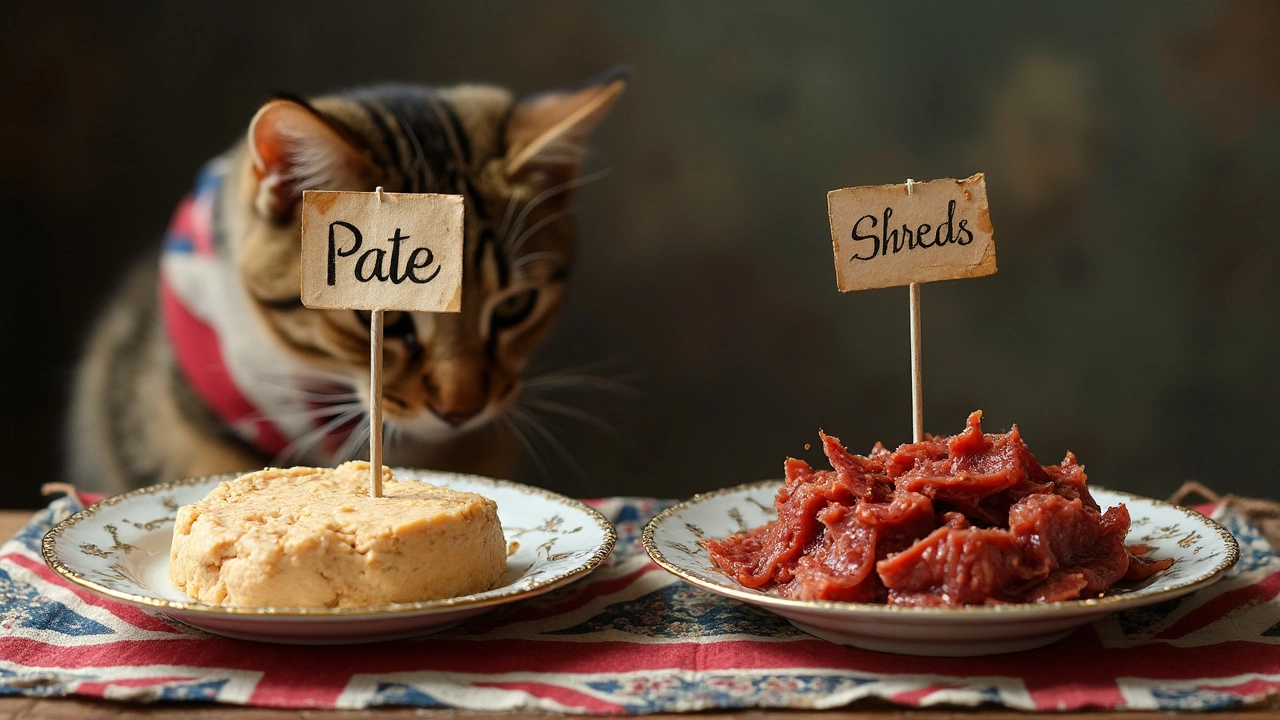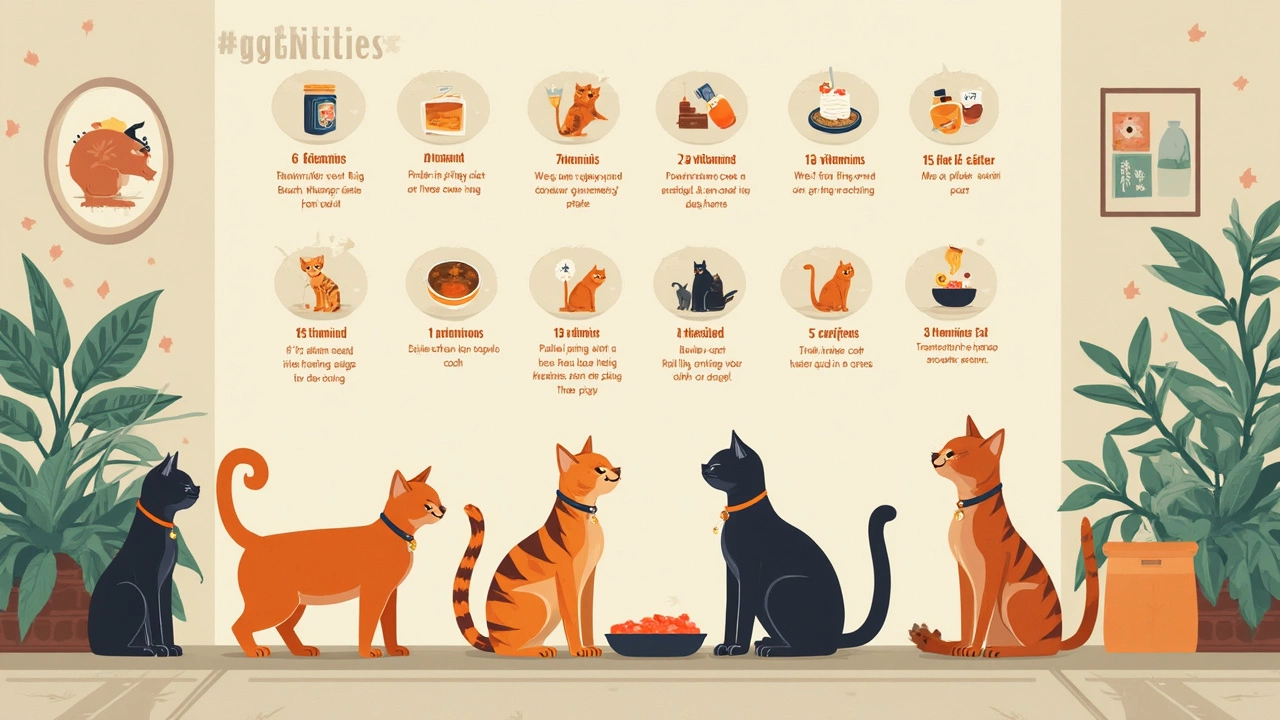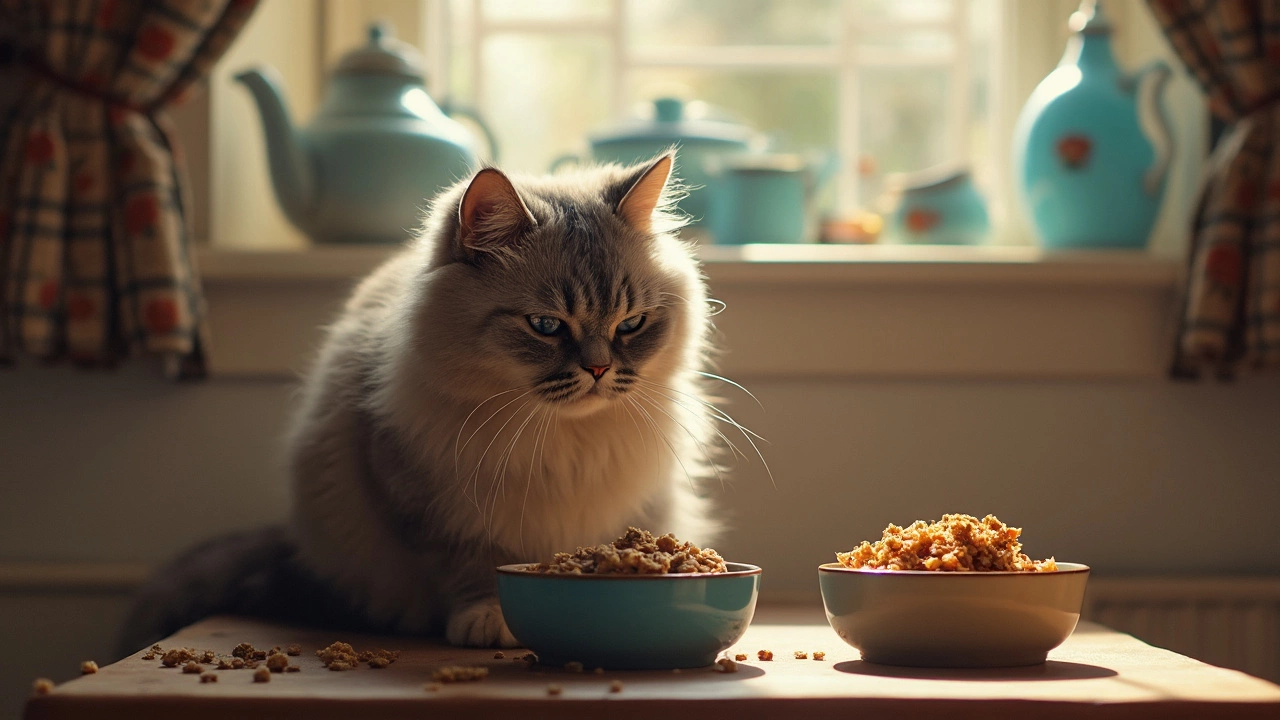Ever notice your cat giving you that judgmental look as you set down their food? It’s not just your imagination. Texture matters to cats, and choosing between pate and shreds isn’t as simple as grabbing the cheapest can at the shop. Hidden behind every tin is a mess of opinions—the internet is full of debates, countless cat owners have swapped stories in vet waiting rooms, and still, most of us find ourselves asking: which is actually better for our picky friends, pate vs shreds cat food? Let’s cut through the marketing claims and find out what will genuinely make your cat’s whiskers twitch.
What Makes Pate and Shreds Different?
Pate and shreds might look similar sitting in their cans, but they couldn’t be more different once you open them up. Pate is like a smooth paste—think creamy hummus but fishy. It’s uniform, moist, and super easy to scoop out. Shreds, on the other hand, are all about texture. Tiny strands or little bits of meat floating in gravy. If you picture pulled pork, but for cats, you’re spot on.
Why does this matter? Cats actually evolved eating prey with lots of texture—think small birds and mice. That’s one reason texture can play a huge role in whether they’ll even touch their dinner or leave you feeling rejected. Sensory stimulation matters, especially for cats who can get bored with repetitive textures. And for some, a lack of variety can be a recipe for outright food strikes.
Then comes convenience for you. Pate is easy to portion and pretty tidy. Ideal if you like to mash up pills in their food, sneak in supplements, or if your cat has dental issues. It’s a breeze for cats who have lost teeth or kittens still learning to chew.
Shreds are messier on your side of the equation—bits flying, leftover gravy splattered on the mat, but loads of cats go wild for that juicy chew. The meat strands force your cat to work a bit, which can trigger their natural hunting instincts. Older cats with trouble chewing, however, sometimes struggle with shreds and can end up licking only the gravy, leaving the rest behind.
Now, manufacturers are fully aware of these differences. In New Zealand alone, food makers report that more than half of their sales last year were pate-based wet foods—likely because owners found it easier to serve and less wasteful. Yet, when polled, 67% of cat owners say their pet “prefers chunks or shredded meat to pureed.” The contradiction comes down to convenience versus feline preference—and sometimes cost. Most brands price both about the same, but boutique shreds with higher meat content can climb in cost. It genuinely depends where you shop and what your cat will tolerate.
Check out this quick table showing what real data says about these two types:
| Type | Texture | Best Suited For | Recommended By Vets | Owner Satisfaction (NZ, 2024) |
|---|---|---|---|---|
| Pate | Smooth, soft, uniform | Seniors, kittens, dental issues | Yes (easy to hide medicine) | 57% |
| Shreds | Stringy, meaty, in gravy | Active adults, picky eaters | Yes (mimics natural prey) | 68% |
For multi-cat households, texture feuds are almost guaranteed. Your older tabby might love pate, while the younger adventurer prefers shreds. Some owners simply offer a bit of both or rotate weekly. If you’re in doubt, check what your local shelters are feeding; many switch up textures to keep the cats engaged and well-fed until they go to new homes.

Nutrition: Texture Is Just the Start
Texture grabs your cat’s attention, but nutrition is what keeps them healthy. It’s tempting to think pate and shreds are just about what feels nice on the tongue, but the nutrients packed inside matter way more. Some folks think pate must be more processed or “artificial,” and shreds must be closer to fresh meat. Not always true.
Whether it’s pate or shreds, both can deliver complete nutrition—if the label says “complete and balanced.” But here’s the catch. The way it’s processed often impacts what nutrients survive the journey from factory to bowl. Pate is typically cooked longer during processing, which helps make the meat safe and shelf-stable but can break down some vitamins. That’s why manufacturers often add back taurine, B vitamins, and amino acids after cooking.
Shredded formulas sometimes use larger pieces of meat and add gravy or broth for moisture and taste. This can be good for hydration, especially for cats who ignore their water bowl. Most cats have a natural low thirst drive (they evolved getting most of their water from prey), so moist food like shreds or pate helps prevent urinary tract issues. In a 2023 New Zealand survey, cats fed predominantly wet food had 39% fewer vet visits for kidney and bladder issues compared to those on dry food.
But there’s a hitch—many so-called gourmet shredded options dump in unnecessary fillers, starches, or carbs in the gravy. Cats don’t need rice, potatoes, or peas, but you’ll see these everywhere. Go for shreds with meat or fish as the first ingredient and low or zero grains. Pates are usually less sneaky with fillers but always double-check ingredients. If you’re choosing for an overweight cat or one with diabetes, check the carbs and skip anything with a heap of tapioca or cornmeal, standard in gravy-heavy shreds.
If your cat has allergies or food sensitivities, pate is a safer bet. It’s way easier to find single-protein pates—think just lamb, just chicken, or just kangaroo (yep, that’s a thing here in NZ!). Shreds are more likely to have mixes, sneaking in fish or egg, which some cats react to. And for cats with dental problems, pate’s soft texture is a game-changer—they can eat with less pain and still get nutrition.
One common tip from local vets: Always read the guaranteed analysis and ingredients panel, even if you buy the same brand every week. Companies sometimes tweak formulas without big label changes. If your cat suddenly stops eating or seems off, check if ingredients have changed.
Here’s another thing: Cats get bored fast. Some behaviourists say even loyal pate-lovers can do with a little variety. Rotating between pate and shreds gives different mouthfeels, so your cat doesn’t turn into a food snob who’ll eat only one type. It also helps if a food gets recalled or goes out of stock—your cat won’t suddenly go on a hunger strike.

Tips for Picking the Right Cat Food Texture
So, what’s a cat parent to do? There’s no clear “winner,” but there are some tricks to make this decision way easier on both you and your cat. Start by considering your cat’s age. Kittens and seniors usually do better with pate for easier chewing and digestion, while healthy adults may love the satisfying chew of shreds. If your cat’s a rescue or was previously underfed, they sometimes inhale their food. Pate can slow them down a bit, while shreds force a pause between bites, reducing vomiting.
If your cat turns up their nose at shreds but laps up all the gravy, don’t panic. Try mashing the shreds with a fork to make them resemble pate. Or, mix a little warm water into pate to increase aroma—most cats are more enticed by smell than taste, so heating pate to “mouse body temperature” (about 38°C) can make even picky eaters happy.
Don’t overlook practical matters. Pates are easier for hiding medicine or supplements, and they mix well with prescription powders for cats needing special diets. For multi-cat homes, try offering each texture in different bowls to see which comes out licked cleanest. Consider using puzzle feeders with shreds to turn mealtime into an interactive hunt, especially for indoor cats bored by routine bowls.
One common myth: the idea that shreds are always healthier or more “natural” since they look more like real meat. Studies show zero consistent nutritional difference if you stick to high-quality brands. What counts most is moisture, protein, and minimal ingredients.
Pay attention to brand reputation and country of origin. In New Zealand, reputable brands like Ziwi, Feline Natural, and Royal Canin offer both pate and shreds, with full ingredient transparency. Always check for recalls or quality scandals. Cheap imports or no-brand tins at supermarkets sometimes sneak in questionable byproducts or excess salt, so steer clear when possible.
If you’re training your cat to accept both, start with small servings of the new texture alongside their favourite food. Most cats take a few days to adjust. Some resist initially, but patience (and a little bribery with treats) works wonders. Keep an eye on their teeth, gums, and litter box—if you see changes in appetite, weight, or poo consistency, it might be worth trying the other texture or talking to your vet.
Worth noting—cats have far fewer taste buds than humans (around 470 vs. our 9,000), so aroma and texture matter tons more than flavour. That’s why you’ll see a dramatic reaction just switching between a salmon pate and a chicken shreds, even if the ingredients are nearly identical.
To sum up, there’s no absolute “best” for every cat. Listen to your pet, rotate if you can, and don’t let marketing sway you. Your cat’s happy crunch or contented gulp says more than any vet brochure or fancy label could.
